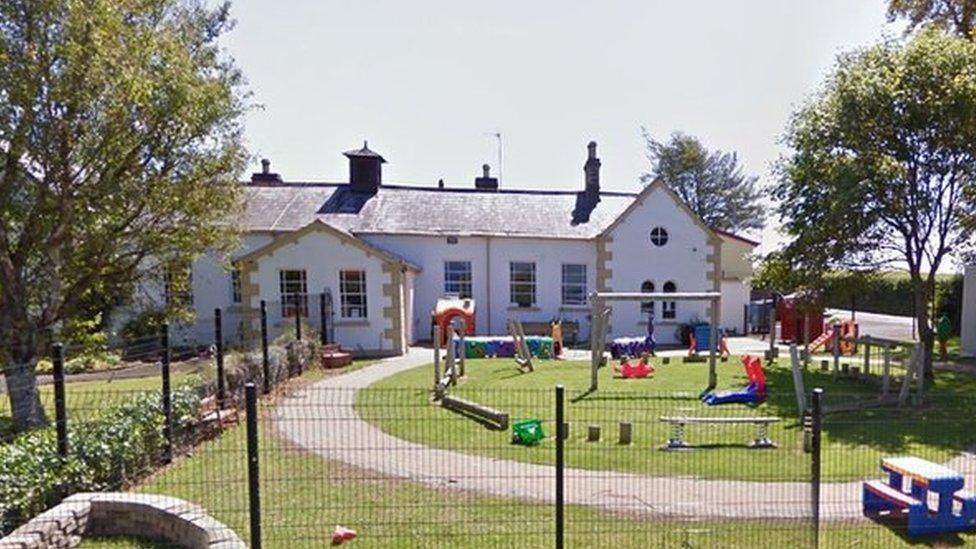Small rural schools as important as church, study says
- Published
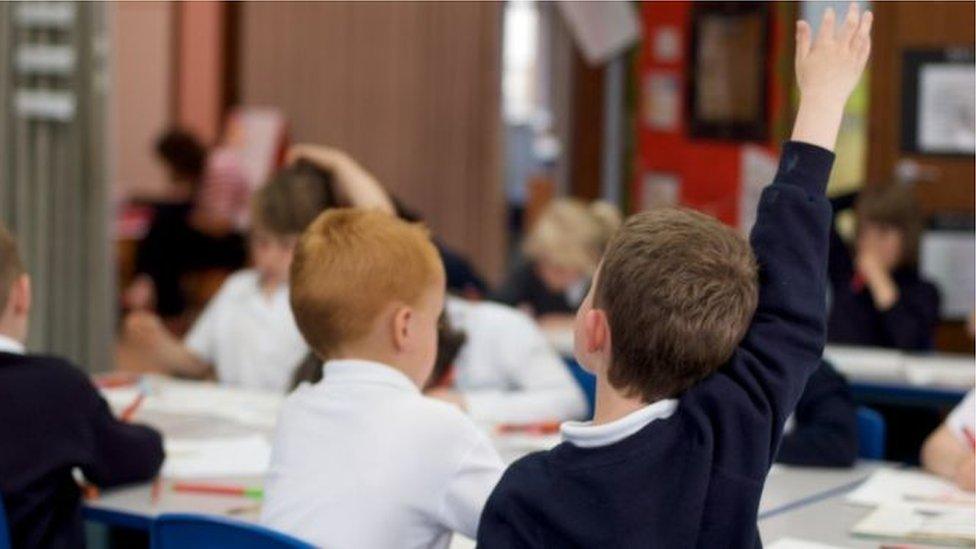
Eighteen out of 38 rural post-primary schools have fewer than 500 pupils
Small schools are as important to, and as influential in, rural communities as the local church.
That is the view of principals, contained in research into small schools from Queen's University of Belfast (QUB).
The study said that small rural schools have many strengths including a strong relationship with the local community and low pupil-to-teacher ratios.
Many face challenges including falling pupil numbers and threat of closure.
The "Small School Rural Community Study" looked at the relationship between small rural primary schools and their local communities.
According to the Education Authority (EA) there are still too many small and "unsustainable" rural schools in Northern Ireland.
The Department of Education (DE) policy on sustainable schools states that primary schools should have at least 140 pupils in urban areas and 105 in rural areas.
According to the EA's strategic plan for 2022-27, about 230 of 800 primary schools in Northern Ireland have fewer than the recommended number of pupils.
The majority of those are in rural areas, with around 190 out of 440 rural primaries having fewer than 105 pupils.
Most are in counties Tyrone, Antrim or Down.
Some small rural primaries are facing closure as they have been judged to be unsustainable.
But the Small School Rural Community Study said small rural schools often formed strong links to their local community and were good at "identifying and addressing pupils' individual needs".
If a small school closed that could leave children in rural areas with no local school - affecting their education and social life - and transport problems, especially in winter, says the study.
In September, for instance, the EA apologised after more than 100 pupils at a rural County Antrim primary were left without school transport for two days.
'Heart of the community'
The QUB study did acknowledge that small schools faced a number of challenges including "the threat of closure on the grounds of financial sustainability".
It also said that in some areas two small rural schools could be "side by side (often only yards apart) serving two communities".
But the study said small schools had been "arguably treated less favourably in the policy arena, as they continue to face a risk of closure or amalgamation".
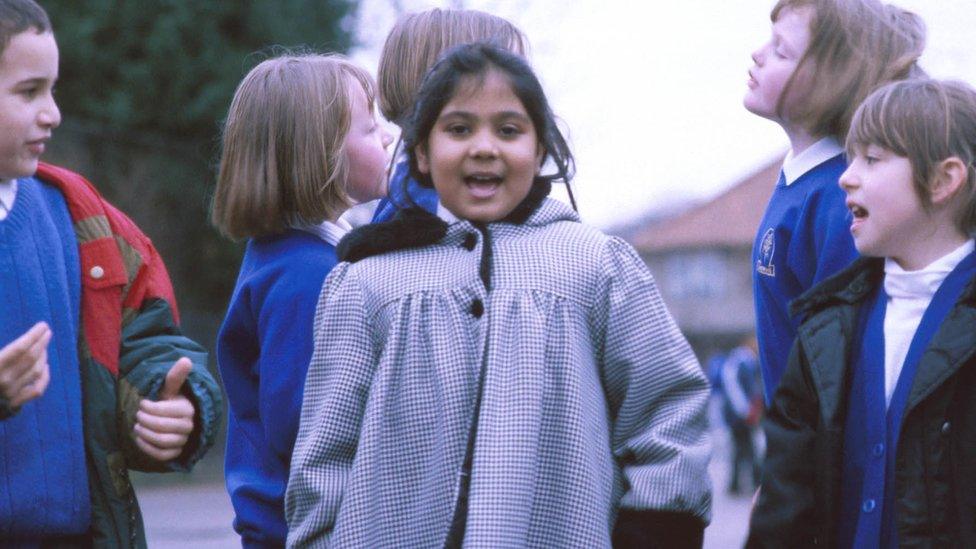
The study's findings are based on the views of 91 small school principals and in-depth studies of five unnamed individual schools, which included the views of pupils, parents and members of the local community.
Most principals who took part said they were concerned about financial pressures and a lack of funding, the workload of staff and increasing numbers of pupils with Special Educational Needs (SEN).
One principal of a school under threat of closure told the authors that "the actual process of closure has been one of the most stressful times in my life, professional and personal".
"Our school is at the heart of the community and acts as an important rural hub for an isolated community," another principal said.
"Unfortunately, the threat of closure is ever present, and this has stopped some families enrolling at the school thus resulting in a fall in our enrolment numbers which are hard to recover from."
When asked about the relationship between the local community and the school, the overwhelming majority of principals said their school was second only to the local church in terms of importance in the community.
Almost all Catholic school principals who took part also said that the Gaelic Athletic Association (GAA) was one of the most influential organisations in their community.
"The role of the churches in these schools and their communities is especially significant," the report said.
"Many have a strong relationship with the church, as not only the church has a representative in the board of governors, but they also share resources (with some schools using the church hall, etc.), church leaders visit the schools regularly, [and] have religious events and celebrations."
Many schools also prepared their pupils for sacraments like communion in conjunction with the local church.
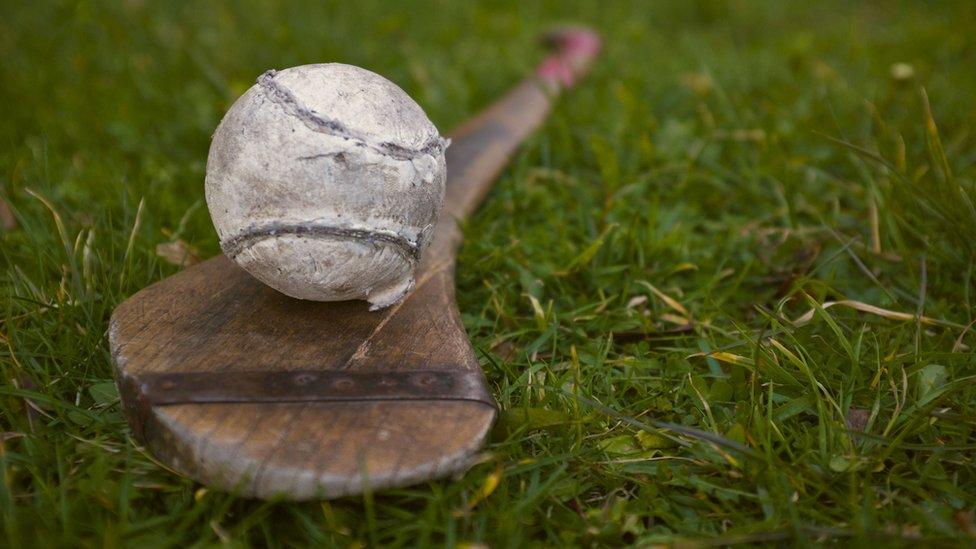
The report found smaller rural primary schools to be as significant as religion and Gaelic sport in some communities
"This school is very much at the heart of the community; our school is literally situated right in the centre of the village with the community able to see into the grounds on all sides," one principal said in the study.
"If there is something happening everyone will see it."
"We have built and maintain a familial relationship with our parents and the community."
"We are involved on a social level with events - any events that are happening we are involved."
The study's authors said that small rural schools engaged with their local community "in a myriad of ways".
"Small rural schools can help develop a sense of belonging and pride in the community within pupils, staff and parents, as they feel part of the community," they concluded.
"Schools organise community events, share resources with different groups, and contribute to the economy of the area, among many other things."
"Some are perceived to be 'at the heart of the community'."
"This can mean different things depending on the school, but they often are a 'meeting point' where people come together."
The report's authors - Dr Montserrat Fargas-Malet and Professor Carl Bagley from QUB - said that should be taken into account when decisions were made about the future of small rural schools.
They are due to present their findings at an event in Riddel Hall at QUB on Saturday 5 November.
- Published18 January 2022

- Published18 May 2022

- Published30 September 2022
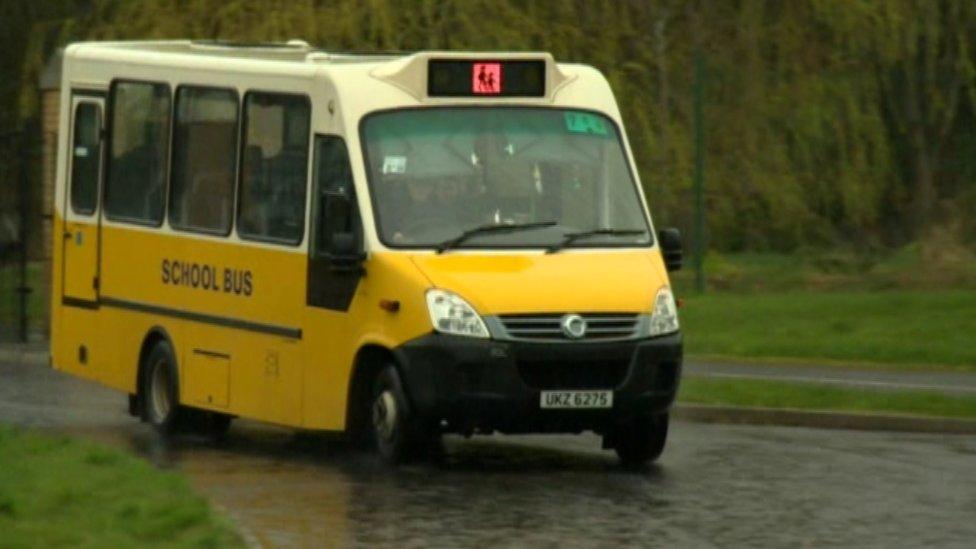
- Published10 May 2022
